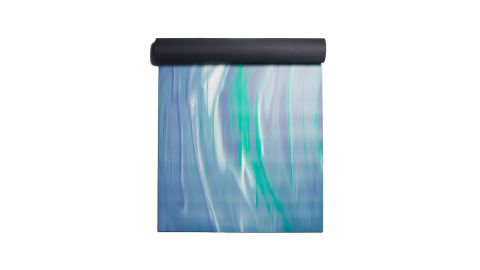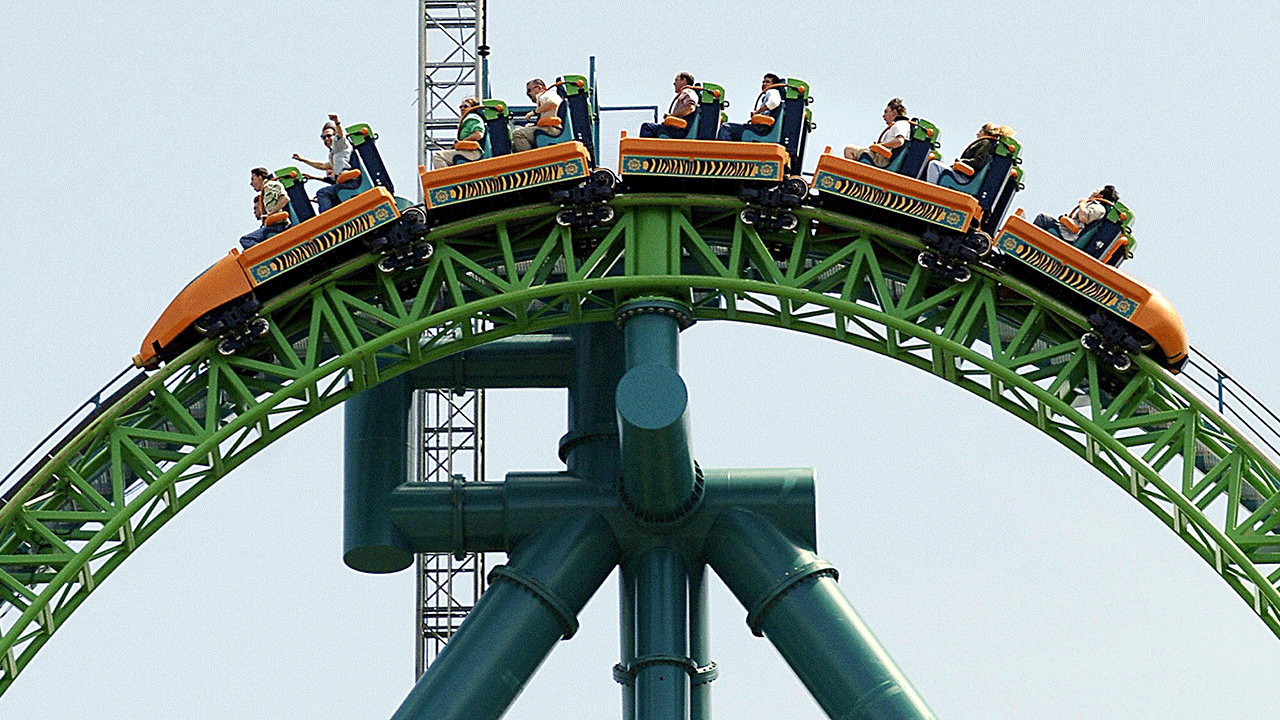This article is part of our series Battle of the Brands, in which we compare category-leading products to their counterparts to determine which are actually worth your money.
As a personal trainer, if there’s one piece of equipment I recommend my clients have on hand during class, it’s a great yoga mat. The best yoga mats can make your workout or yoga practice more comfortable and safer for your joints, boosting your enjoyment of movement, which carries too many physical and emotional benefits to list and thus increasing the likelihood you’ll commit to the habit consistently.
Naturally, you might want to lean on one of the most popular yoga mats with devout followings to help you reach your goals. Both the Lululemon Reversible and the Alo Warrior mat provide ample cushioning, anti-odor and moisture-wicking properties, and plenty of room to explore your body — but they also offer starkly different workout experiences. Let’s break down which yoga mat is best for you.
The Alo is a bit grippier and might stay in place better if you’re focused on high-intensity routines, so it’s a reasonable choice for keeping at your home studio.
The Lululemon mat is less expensive, provides better value for money, more colorway options, better moisture management, and lighter weight — meaning an all-around more enjoyable yoga experience that’ll actually make you look forward to hitting the mat.
Size and weight
When it comes to yoga mats, size matters. You want to ideally give yourself around 7 to 10 inches of leeway so your head and limbs stay off the ground during your practice.
Measuring a bit over six feet, the standard Alo Warrior Mat has plenty of space for those with longer limbs. The standard Lululemon Reversible Mat measures shorter at 5 feet 11 inches long, so it doesn’t have quite as much room to maneuver. Both the Lululemon and Alo mas are available in 7 foot long versions for taller people, however, so if you’re particularly loyal to one brand, you’re bound to find your perfect fit within it. And Both mats measure 26.4 inches or 2 feet, 2.4 inches wide, just the right amount of room to allow you to move horizontally in the frontal plane when stepping out at hip width.
Both the Alo and Lululemon mats measure 5 millimeters thick, easy enough to roll up when not in use while still providing enough comfortable padding between your body and the ground. But the Alo’s foam is a lot denser — it’s 35% heavier than the Lululemon mat yet only 4.6% longer, weighing in at 8 pounds in the standard size, while the Lululemon mat measures just 5.24 pounds. This means the Lululemon is a lot easier to carry around town to and from the yoga studio, while the Alo can certainly tire you out even before you make it to your class.
The denser, heavier foam is also grippier, which means the Alo stays put instead of sliding around, a benefit if you plan to use your mat for plyometric cardio-centric movements, like mountain climbers or lateral skater hops. On the downside, the Alo’s dense rubber also prevented it from lying flat, regardless of whether we laid it down on its polyurethane or rubber side. Even if we rolled it out flat for hours beforehand, or if we pinned it down with a water bottle, we couldn’t get it to lie flat at the edges, meaning we effectively lost several precious inches on what’s supposed to be the longer, roomier mat.
Grip, sweat resistance and moisture wicking
Both the Lululemon and Alo mats are reversible, meaning you get to choose between a slicker polyurethane top layer or a cushioned rubber layer ideal for sweatier sessions.
The Alo’s polyurethane layer appears to be matte, but it’s still tangibly slick and smooth. While it offers plenty of support during static poses like downward dog when your body has four points of contact with the ground, it feels a little too slippery to serve as support during balance poses like dancer or bird of paradise. Advanced yogis might appreciate the smooth, firm surface, since it can help you root your feet and toes more firmly into the ground, whereas a grippier, softer layer might throw off your balance.
Both mats claim to be moisture-wicking, but I found that both leave something to be desired — if I use either with the smooth polyurethane side facing up, they feel nearly identical in that after a few beads of sweat, I’ll go sliding right off the mat. In neither case would I recommend the smooth side for high-intensity workouts. (If you do use it this way, keep a microfiber towel on hand to absorb extra moisture while providing a bit of extra traction.)
But using their more cushioned sides, there’s a clear difference. I’ve been using the Lululemon Reversible mat for the last seven years, and while my cats have adopted it as a (very expensive) scratching post, it’s more or less retained its cushion and grip all these years. Though my workouts yield a ton of sweat, the rubber side of the Lululemon mat has never stayed damp throughout the duration of a high-intensity workout in the several years I’ve used it. Post-workout sweat stains were barely discernible, and it also felt dryer to the touch throughout the entirety of the workout.
The heavier, denser Alo mat retained more moisture and took longer to dry. While we’d have to use the mat over years to really know one way or the other, it makes us wonder about long term damage and an overall shorter lifespan.
You’ll want to abide by certain guidelines when taking care of your yoga mat: avoid harsh cleaning solutions, keep weights and workout equipment off the mat, remove any jewelry before your practice so as not to scuff the mat, and store it face up to protect the rubbery underside from any jagged edges.
If you’re looking for a set-it-and-forget-it option, you can’t go wrong with the Lululemon mat. The brand suggests wiping it down after use with a natural cleanser and damp cloth.
Related: How to clean gym equipment with these 15 essentials
The Alo mat requires applying a 1:20 solution of oil-free soap or vinegar and warm water to a microfiber cloth — they caution against applying the solution directly to the mat — and then wiping down the mat. While this is hardly an overly involved cleaning process à la a 12-step nighttime skincare routine, it does suggest that the mat is more delicate than the Lululemon. And indeed, when I first received it, I noticed scuff marks on the smooth side even before use. I can’t imagine how beat up it’ll look after years of practice.
I adhered to these cleaning suggestions on both mats and found the grippy polyurethane sides wiped down smoothly immediately. The rubber sides were trickier, since they both attracted dirt like chalk on a school blackboard. Given that Alo’s black rubber underside is so grippy, it attracts extra dust and dirt, so I needed to manually pick off the debris to get it really clean. I didn’t have to poke and prod at the Lululemon rubber side as much, likely because the bright pink color disguised lots of it.
Yoga culture is all about bright and bold hues and patterns — Lululemon clearly takes the cake on this one, with 17 colorways to pick from versus seven for Alo (including three tie-dye patterns, which are more interesting to look at than their monochromatic counterparts). While the sheer volume of colorways and patterns available for the Lululemon mat might inspire a sense of decision fatigue for some, it really offers a chance for practitioners to showcase their personal style (and maybe even match it to their outfit). The colorways are at once unique enough to feel like the mat was designed for you, yet distinctive enough to scream Lululemon in the best way possible.
I selected a pink-ish tone for both mats so I could make an apples-to-apples comparison. While dark finishes hide sweat better (it would have made my life that much easier to select the black option in both, and if you’re really concerned about such things, a dark color is a good choice), I wanted to see clearly how they’d fare against dripping sweat.
My hands were slightly damp during my practice, and that immediately created an embarrassingly dark imprint on the “Smoky Quartz” (a light dusty pink) Alo mat. The brighter pink on the Lululemon mat better hid the moisture, as I only detected faint lines of sweat throughout my practice. Luckily, the rubber underside of the Alo mat is black, so you can always alternate between showing off your personality (and color preference), and then promptly retreating to a sort of hibernation mode once you flip it over to the rubbery black side.
While these are both quality yoga mats, the Lululemon is less expensive, provides better value for money, more colorway options, better moisture management, and lighter weight — meaning an all-around more enjoyable yoga experience that’ll actually make you look forward to hitting the mat. It’s just a better mat at a lower price, regardless of application.
The Alo is a bit grippier and might stay in place better if you’re focused on high-intensity routines, so it’s a reasonable choice for keeping at your home studio. But we’d still give the nod to the Lululemon here, since the Alo’s denser foam construction makes it both more challenging to keep it flat and a bit more stubborn to roll up in a compact, stowable silhouette if you need to stow it away.
By the way, if you like the Alo look, I’d opt for the Alo Air Mat, a 3.5-pound version of the Warrior mat that’s just 2 millimeters thick and equally non-slip. Likewise, if you’re looking for ultimate portability, If the 5 pounds Lululemon Reversible mat still feels like too much, I’d opt for its 2.3-pound cousin in The (Un)Mat.
.png)
 1 year ago
7
1 year ago
7











 English (US) ·
English (US) ·